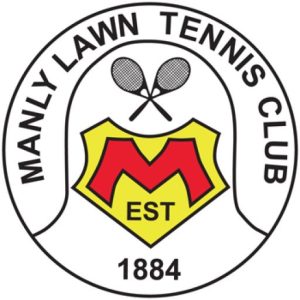GRACIOUS, BRILLIANT, INEVITABLE: WHY NADAL IS THE SPORT’S GOAT
When Rafael Nadal first burst onto the scene by winning the French Open in 2005, the consensus was he was another in the long line of great claycourt players, men who could dominate on the red surface of Roland Garros but were often vulnerable on faster surfaces.
Ivan Lendl and Mats Wilander, truly great clay (and hardcourt) players, never won Wimbledon. On the flip side, Hall of Fame players like Pete Sampras, John McEnroe, Jimmy Connors, Boris Becker and Stefan Edberg could never quite figure out the red clay.
Bjorn Borg, who won in Paris six times, also won Wimbledon five times – but never the US or Australian Open. Rod Laver won on grass and clay and no doubt would have on hard courts had majors been played on them during his career. Laver could have won playing on an iceskating rink – or any other surface. Sampras won 14 major titles but never got to the final in Paris. Before Sampras came along, Roy Emerson held the record for men’s Grand Slam singles titles at 12.
On Sunday, Nadal won one for the 14th time in Paris. His record in French Open finals is now 14-0 after his crushing 6-3 , 6-3 , 6-0 victory over Casper Ruud. Ruud, who is 23, actually led 3-1 in the second set before Nadal simply took his game to another level, winning the final 11 games of the match. The Norwegian didn’t play poorly the first two sets, but he had no chance.
Nadal winning in Paris on the tournament’s final Sunday is as absolute as summer rain in London. It is inevitable. This time around, Nadal’s toughest match came in the quarterfinals , where he won a four-hourplus classic over fellow all-time great Novak Djokovic. That match clearly should have been played in the final , but that’s not alway how it turns out. And so Nadal, who has missed time with injuries this year, was the No.5 seed, because God forbid anyone should fail to follow the rankings.
Seeding Nadal fifth is roughly the same as telling Tiger Woods to go play the AAA Korn Ferry Tour after he won his first Masters by 12 shots. Nadal, in any case, long ago proved he was far more than a claycourt specialist. His victory was his 22nd Grand Slam title, putting him two in front of Djokovic and Roger Federer.
If you held a final vote for greatest player of all time today, Nadal, who turned 36 on Friday, would have to be No. 1. Statistics are overused, but a handful of Nadal’s numbers go beyond breathtaking. He is 112-3 at Roland Garros (what?) , but he has won eight majors off the red clay: two Australian Opens; two Wimbledons and four US Opens.
That’s as many majors as icons Connors, Andre Agassi and Lendl each won total, and one more than McEnroe. What’s most fascinating about all this is that last year the title of greatest player ever had been more or less ceded to Djokovic. He had beaten Nadal on his way to winning in Paris in June and had gone on to win at Wimbledon in July, putting him in a three-way tie with Nadal and Federer with 20 major victories.
Federer turned 40 in August and had lost in the Wimbledon quarters to Hubert Hurkacz in straight sets, including 6-0 in the third. He then announced he needed knee surgery, again, and hoped to play again in 2022. He still hasn’t played and, as McEnroe noted on Sunday, there’s a good chance we will never see him again in a major championship.
After his semi-final loss to Djokovic at Roland Garros, Nadal had pulled out of Wimbledon and the US Open with recurring foot issues . Many wondered if his career might also be over. Thus, Djokovic’s path to a 21st major victory and the record in major wins appeared clear. He was 34, healthy and going for a calendar Grand Slam in New York. His two great rivals were older and injured. But then Daniil Medvedev whipped him in the US Open final and his refusal to be vaccinated in the midst of the pandemic got him deported from Australia before the Australian Open. Nadal then came from two sets down in the Australian final against Medvedev and became the first man to get to 21 major wins.
Sunday, he got to 22 and, apparently , at 36, is still counting. He’s now halfway to a calendar Grand Slam, a feat that hasn’t been accomplished on the men’s side since Laver did it in 1969 at a time when three of the four majors were still played on grass.
Djokovic, who has won at Wimbledon six times, will no doubt be poised to take him down there. And, although Nadal won one of the two greatest matches of all time (along with McEnroe-Borg in 1980) in the 2008 final at the All England Club, grass is still his toughest surface because he can’t wear people down the way he does in Paris, and to a lesser extent in New York and Melbourne , over shorter rallies and shorter matches. That is a discussion for another day.
Sunday was a day to revel in Nadal’s extraordinary career, his ability to come back time and again, whether from injury or from a point in which his opponent appeared to be in control. That’s the greatness of Nadal: You can get him down, but it is almost impossible to get him out. Nadal has now heard his anthem played on a French Open Sunday 14 times. The emotion on his face made it clear that he still revels in every victory. As we all should.
The Washington Post

